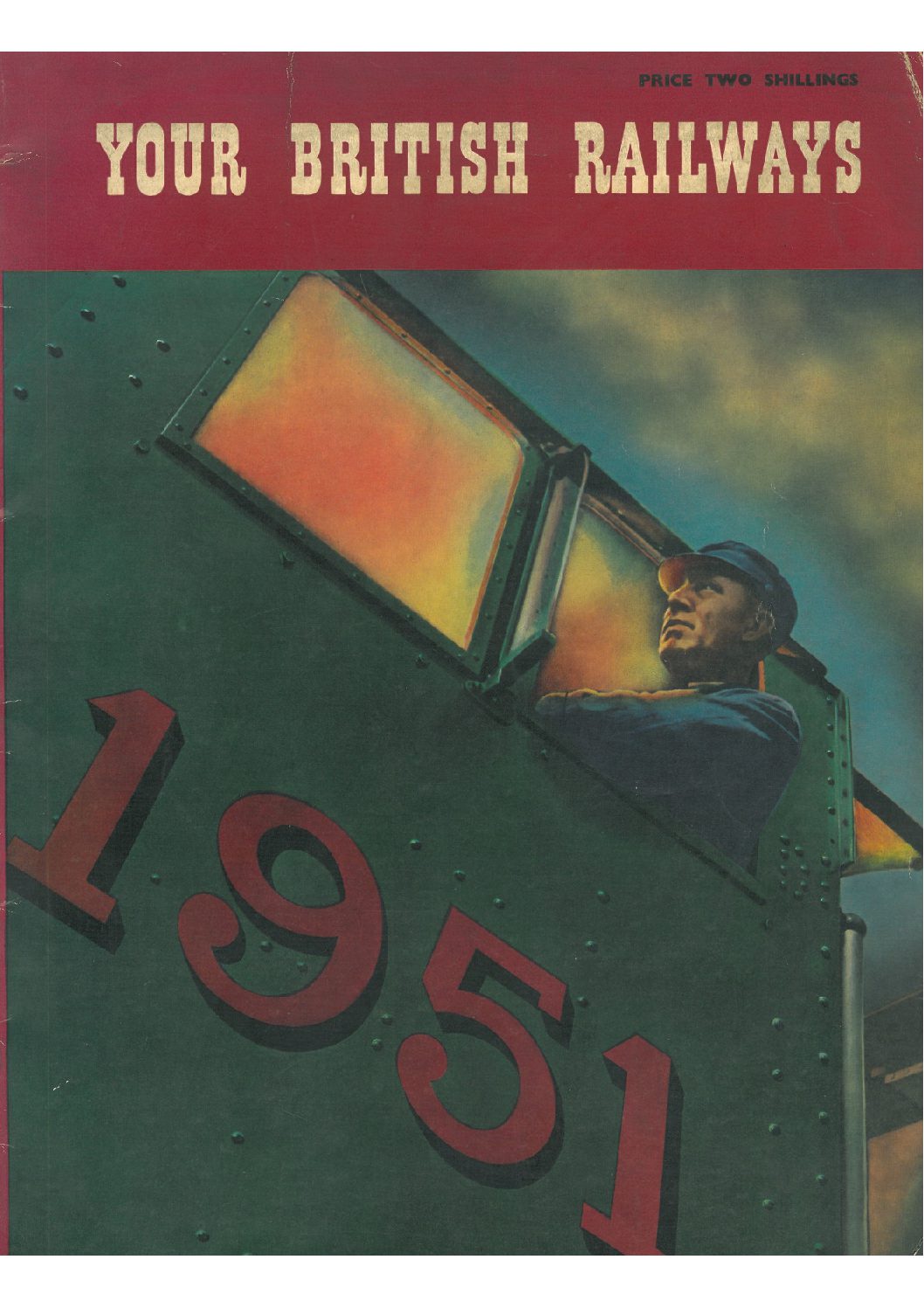Description
Priced at two shillings (10p) approximately £4-50p at 2018 values, this beautifully presented book was a rarity in post WWII “Austerity” Britain. There are no credits given to individual writers or photographers, but the style is clearly influenced by the type of photo-journalism exemplified by the work of Bert Hardy and others, in the popular news magazine “Picture Post”. Having said that, some of the photos look a bit “posed”, lacking the naturalism of Hardy’s work. There are a couple of pages including statistics and contents in a cartoon style reminiscent of “Punch” or “Lilliput” and a centre spread with a cut away perspective drawing of a “Britannia” class Pacific locomotive, although this is a bit lacking in clarity and detail compared to similar drawings published by the LNER, GWR and LMS pre-war. Design of the entire publication is credited to Alfred Pemberton Ltd., printing by Tinlings of Liverpool
After nearly six years of peace, rationing was still in force, further economies were needed because of involvement in the Korean war, the National Health Service was proving far more expensive to run than had been anticipated, and the nationalisation of transport was failing to produce the integration and economies that had been hoped for. Indeed the way in which the process had been carried out, with a British Transport Commission overseeing, and supposedly coordinating, the activities of “Executives” including the Railway Executive, had made the situation worse. The railways had been stripped of the road haulage companies, bus companies, canals, docks and harbours (except “packet ports”) which they had owned, all of which had been placed in the control of other “Executives”. This significantly diminished the railway’s “bottom line”, and destroyed a substantial measure of transport coordination which had been achieved without government interference.
After five years of war and six years of “Austerity” peace, the government decided that the long suffering British people deserved a treat and the Festival of Britain was conceived as a “Tonic for the Nation”, a celebration of national history, culture and industry. London obviously was the “hub” with the South Bank Exhibition, Royal Festival Hall and a huge fun fair at Battersea, but most cities staged local exhibitions and events, (British Railways held one at York see –
– while a ship board exhibition toured major ports. Events were all branded with an easily recognisable logo, and a palette of bright colours was deployed in advertising and displays. This last feature was amongst the most important. We tend to forget what a monochrome world post war Britain was. Few business premises had seen a lick of paint since the 1930s, may large industrial buildings still bore the faded remains of drab green and brown camouflage paint, and most of the new buildings going up on the bombed out city sites suffered from shortage of money and materials, and lack of imagination in their design.
The Festival of Britain did have a beneficial effect, in that it stimulated interest in the built environment, particularly in the use of colour and initiated a “Festival” style of architecture, which while not to everyone’s taste, was a big improvement on much of what had been erected recently. This had its effect on contemporary railway buildings. See:-
British Railways took part in the South Bank exhibition with locomotives exhibited on a siding on Waterloo Bridge, but what was not made clear that no main line diesel electric locomotives had been ordered since nationalisation. Because R. A. Riddles, the mechanical engineer on the Railway Executive could be afforded in the foreseeable future (when done, it took place in stages, as investment became available) and would have nothing to do with diesel electric traction. The LNER had invited tenders for a squadron of around 20 main line diesel electrics, to take over from Pacifics on London – Scotland services. Experience with these would have been invaluable, but Riddles quietly stifled the project, and insisted on embarking on new “standard” steam locomotives with a notional life span of 30 years. These cost tens of millions, were all scrapped by 1964, and delayed the modernisation of British Railways by a decade.
All was not in fact well with British Railways, but one would not guess so from this publication; readers were at least spare flattering portraits of those responsible!

Reviews
There are no reviews yet.